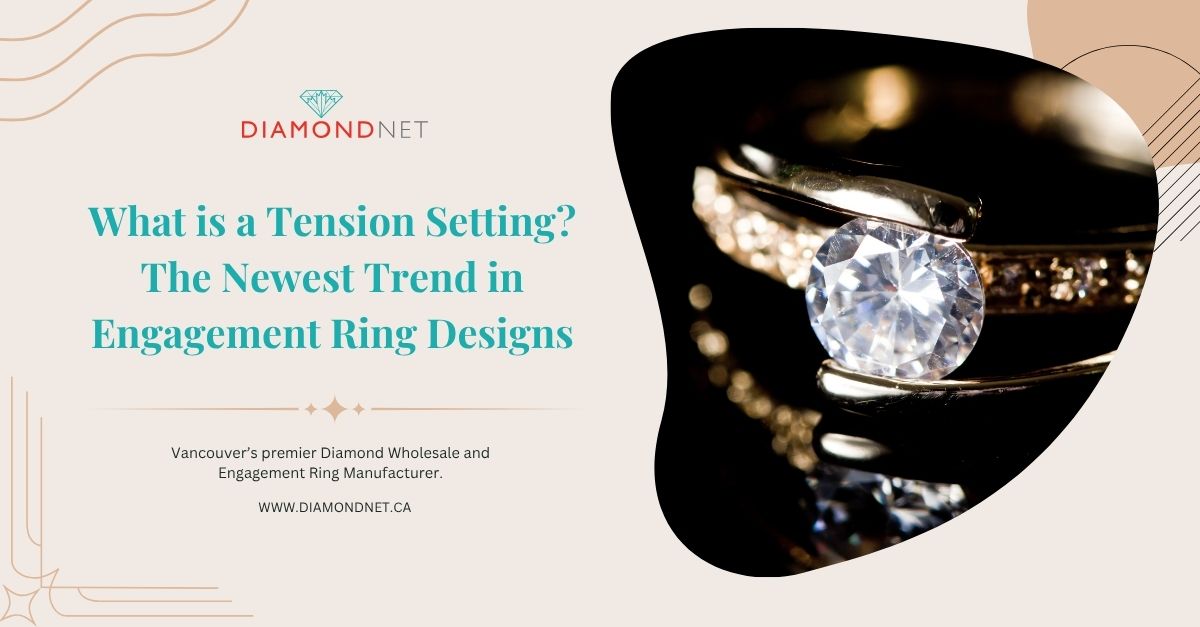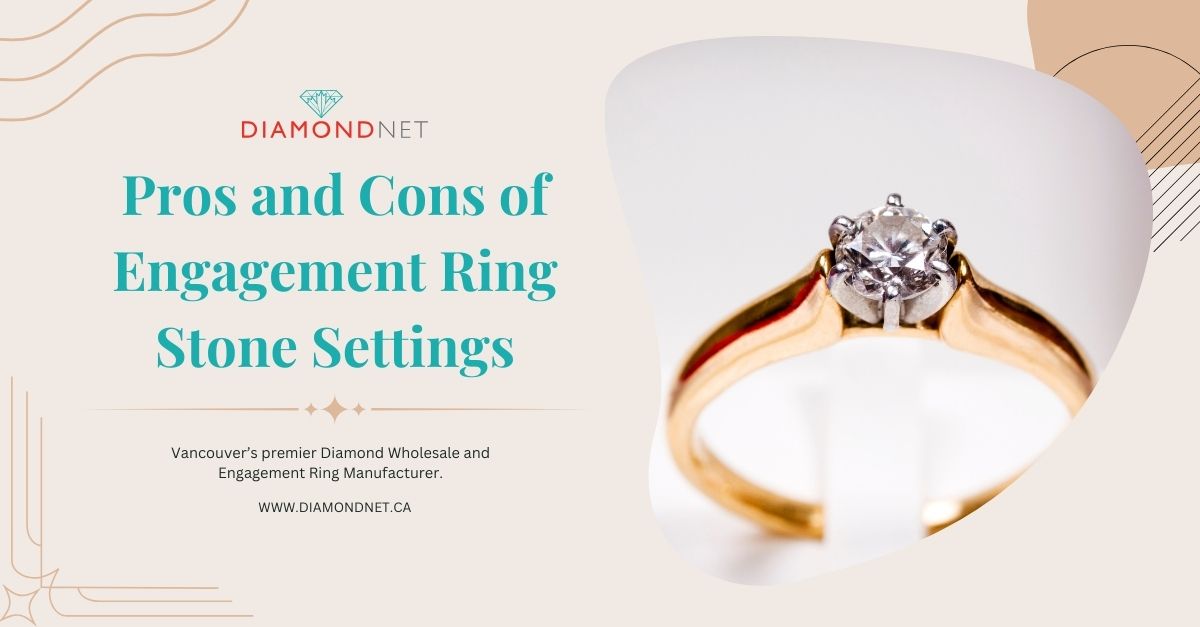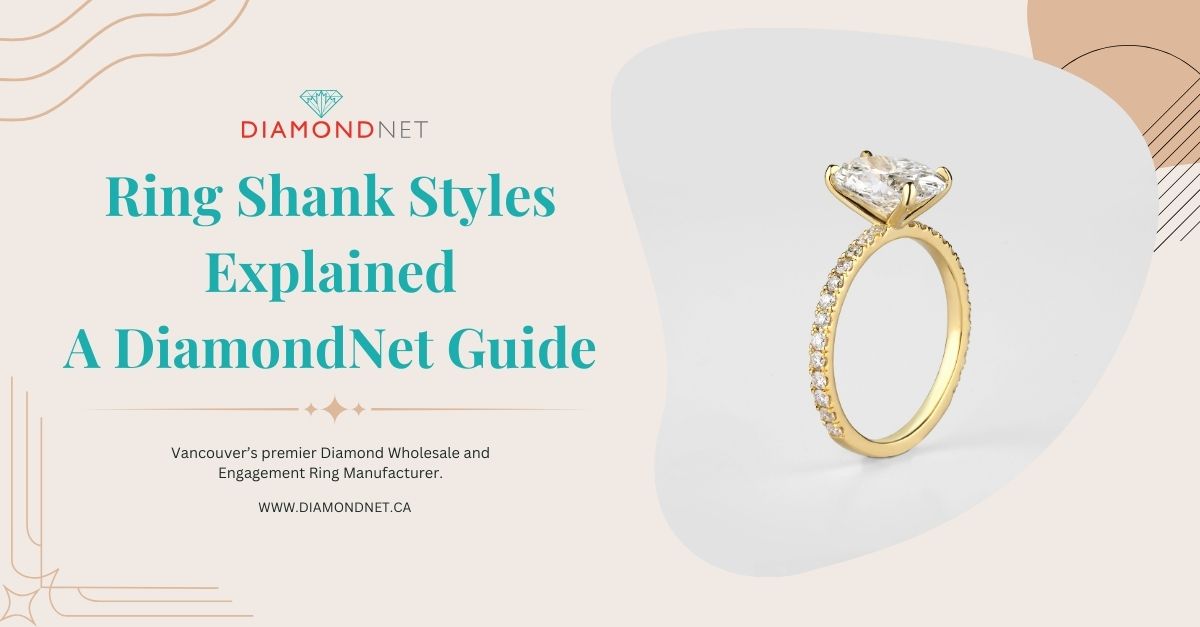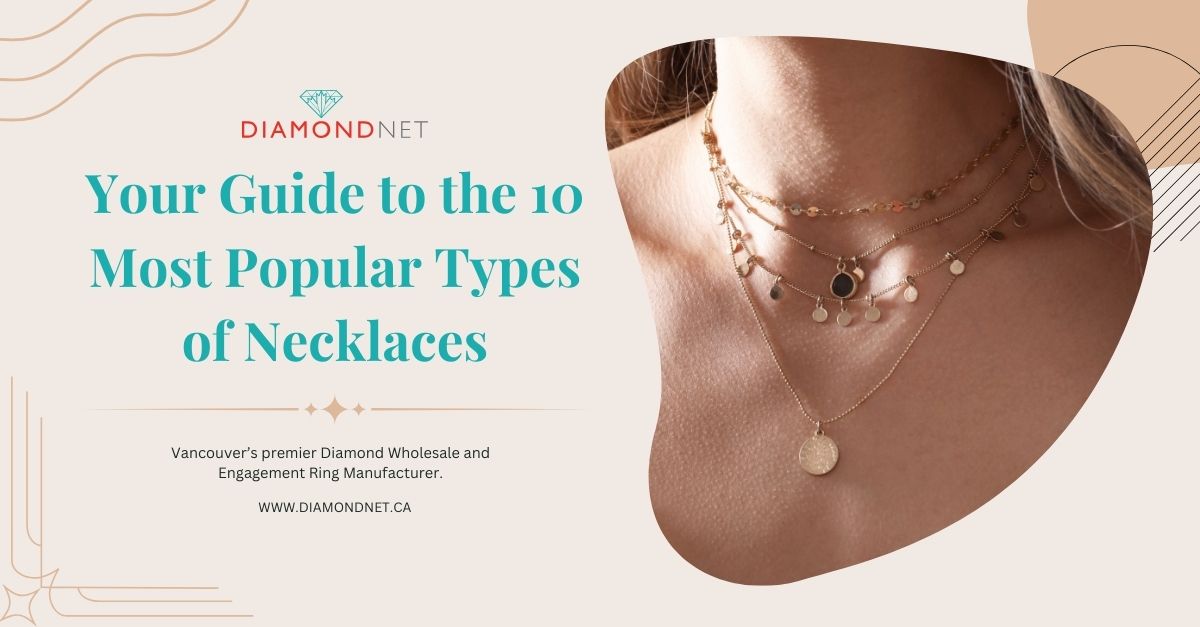Tension-setting engagement rings are turning heads—and for good reason. With their clean lines, architectural precision, and dramatic floating effect, they offer a bold alternative to traditional ring settings like prong or bezel.
Rather than securing the gemstone with visible claws or a metal frame, tension rings use carefully engineered pressure to hold the stone in place. The result? A centre stone that appears suspended in air, maximizing sparkle and making a strong modern statement.
At DiamondNet, we’ve seen growing interest in these unique settings, especially among clients seeking something sleek, sophisticated, and just a little unexpected.
This guide breaks down everything you need to know—from how tension rings work to why they’re gaining popularity in today’s jewellery landscape.
Here is the Quick Answer:
Tension setting engagement rings secure the gemstone using pressure, not prongs, creating a clean, floating effect. They're ideal for those who love modern, minimalist styles and want maximum light exposure. These rings are engineered for precision, require hard stones like diamonds or sapphires, and are best chosen with expert help due to their custom nature and limited resizing options. With the right fit and care, they offer a bold, durable, and eye-catching alternative to traditional ring settings.
What is a tension setting in jewellery?
A tension setting holds a diamond or gemstone in place using carefully applied pressure, rather than traditional prongs or bezels. The stone is suspended between the open ends of a metal band, appearing to float in mid-air.
Key features include:
- Compression-Based Hold: The ring’s shank is engineered to apply equal force on both sides of the gemstone, gripping it securely at the girdle (the stone’s widest part).
- Invisible Support: Tiny grooves or notches are carved inside the band to cradle the gemstone discreetly without interrupting the clean aesthetic.
- Precision Fit: Each tension setting is custom-calibrated to the exact measurements of the chosen stone using computer-aided design (CAD) to ensure flawless alignment and secure placement.
This seamless style offers both structural ingenuity and eye-catching elegance—ideal for anyone seeking a modern, minimalist engagement ring that doesn’t compromise on engineering or brilliance.
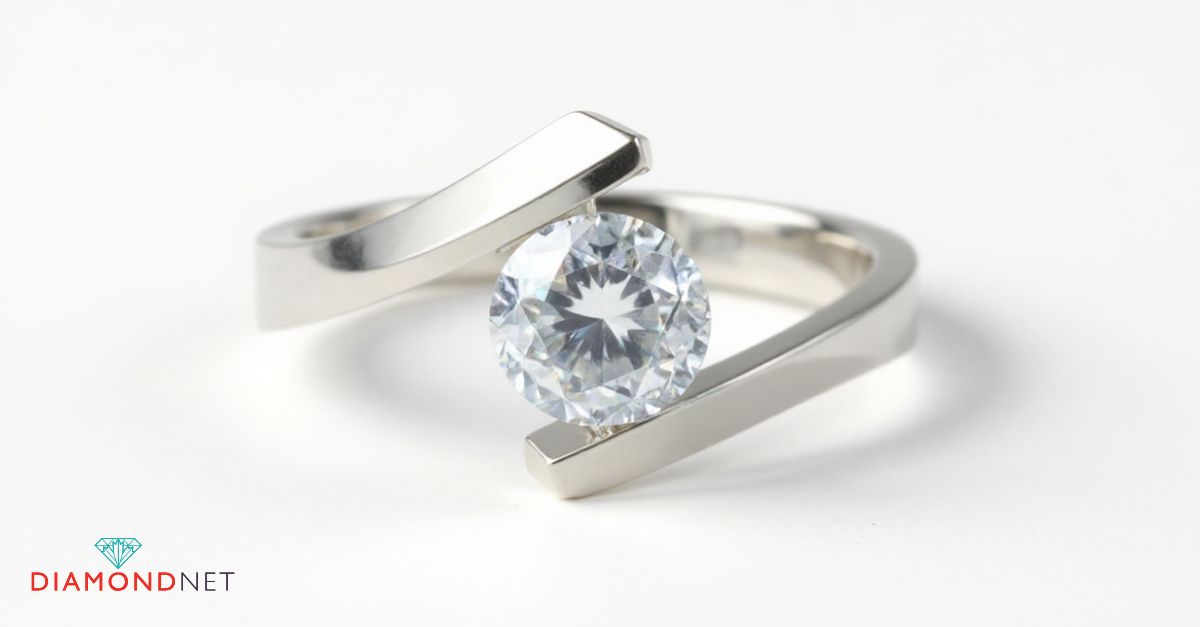
Why Tension Settings Are Trending in 2025
Tension setting engagement rings are making a major impression in 2025 for their visual drama and minimalist edge. They appeal to design-forward couples who want something distinctly modern, without the ornate weight of traditional settings.
One of the biggest draws? The illusion of a floating gemstone. With no prongs or bezel obstructing the view, the diamond or gemstone seems suspended in mid-air—making it the immediate focal point. This unique architecture amplifies brilliance by allowing light to pass through the stone from nearly every angle.
Equally compelling is the style itself. Tension rings embody clean lines, open space, and a bold yet simple aesthetic that fits effortlessly with contemporary design trends. They stand out in a market saturated with halo and solitaire options, offering something sculptural and uncommon.
As consumers continue to value individuality in modern engagement rings, tension settings deliver both innovation and elegance. Whether you’re after a statement piece or a sleek minimalist look, this design offers an exciting balance of technical mastery and visual impact.
How Tension Settings Actually Work
Behind the clean, floating aesthetic of a tension setting lies remarkable engineering. These rings are more than just beautiful — they rely on physics and precision craftsmanship to keep the gemstone secure.
Key technical features include:
Compression Force Holds the Stone
The band applies extreme pressure — up to 12,000–50,000 psi (about 350 MPa) — gripping the gem firmly between its ends. The stone is seated in tiny, laser-cut grooves that are invisible to the eye, offering security without visual bulk.
Engineered for Precision
Each tension ring is custom-calibrated to the exact dimensions of the gemstone. Computer-aided design (CAD) ensures the pressure is distributed evenly, preventing stress points that could cause cracks.
Strong Metals Required
Only certain alloys are strong enough for tension settings. Titanium, stainless steel, platinum, and specially hardened gold are commonly used for their structural resilience.
Hardness Matters
Because of the intense pressure applied, only gemstones with a Mohs hardness of 9 or above — like diamonds, sapphires, rubies, and Moissanite — are suitable. Softer stones risk fracturing under compression.
Tension Rings: The Pros and the Caveats
A tension setting offers modern elegance, but its structural design comes with practical considerations. Here’s what to weigh before choosing one.
The advantages include:
✔ Secure Hold: Despite its open look, a well-made tension setting grips the stone firmly through calibrated pressure. In many cases, it offers stability equal to or better than prongs — without the risk of snagging.
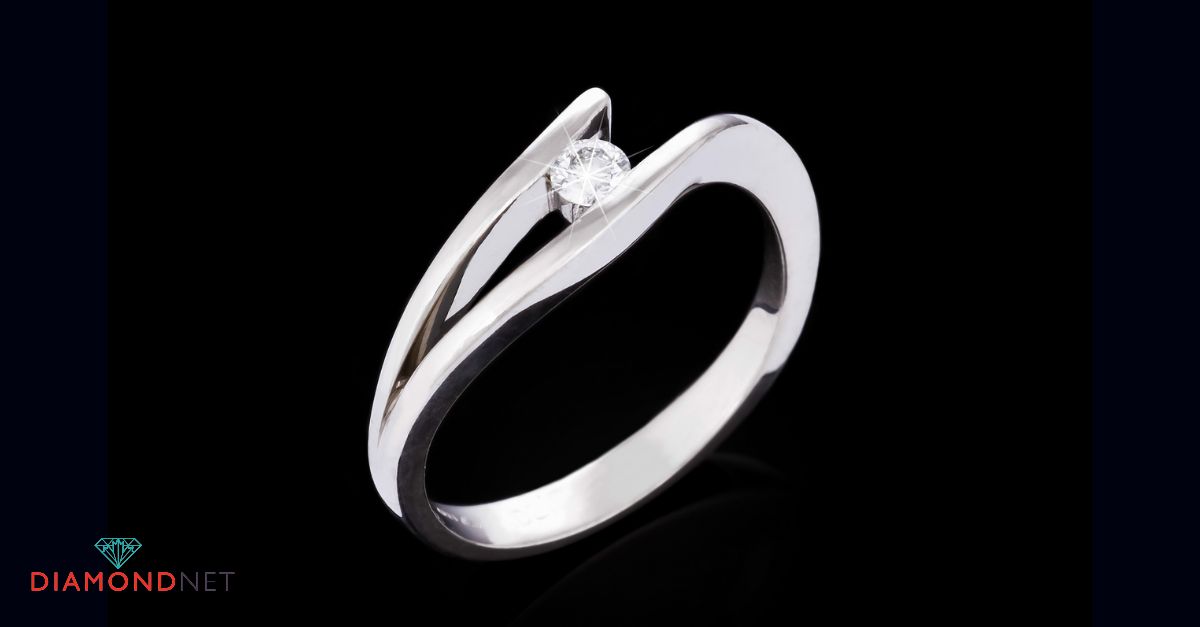
✔ Brilliance, Unobstructed: With no metal covering the crown or pavilion, the gemstone benefits from maximum light exposure. That means superior sparkle, fire, and contrast.
✔ Low Maintenance: Fewer crevices mean fewer places for dirt and debris to accumulate. These rings are easier to clean and don’t require prong-tightening over time.
✔ Standout Style: With its clean silhouette and floating gemstone, a tension ring makes a bold, sculptural statement — especially suited to contemporary tastes.
Despite all the appeal, keep these important factors in mind before choosing a tension setting:
- Limited Resizing: Because of its precision-engineered structure, a tension ring can’t be resized more than a fraction without compromising integrity. Accurate sizing at the outset is essential.
- Higher Cost: The exact engineering, choice of durable metals, and need for expert craftsmanship often result in a higher price tag than traditional settings.
- Impact Sensitivity: Though secure under normal wear, a strong enough impact could compromise the tension or shift the stone. These rings are best removed during heavy-duty activities.
- Design Constraints: Tension settings work best with solitaire stones. Side accents or halos require specialized hybrid settings and more intricate design work.
- Stone Requirements: Only very hard gemstones — typically those with a Mohs rating of 9 or higher — are suited for tension settings. Internal flaws (inclusions) can increase fracture risk under pressure.
Best Practices for Buyers Considering a Tension Ring
Tension rings require thoughtful planning and expert craftsmanship. If you’re considering this striking style, the following best practices will help you make a confident, well-informed choice that balances aesthetics with long-term durability.
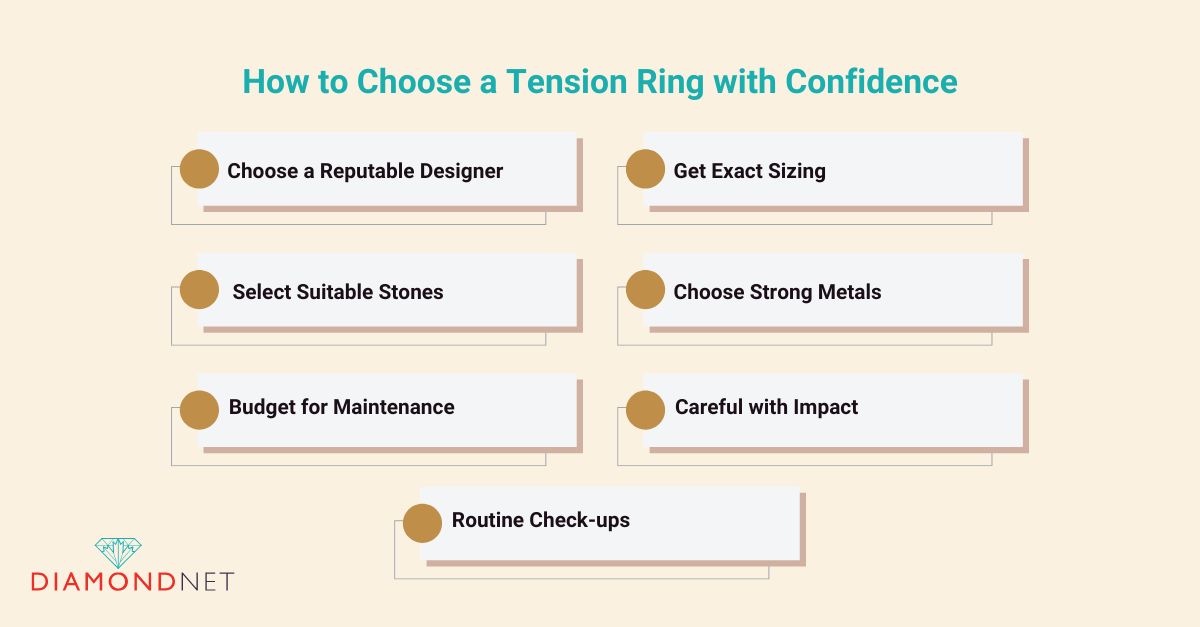
Choose a Reputable Designer
Tension settings demand precision engineering. Work only with jewellers who specialize in this design and can show examples of past work. Ask about their tools, techniques, and quality control processes. Precision is not optional—it’s everything.
Get the Sizing Right the First Time
Because tension settings can’t be resized like traditional rings, exact finger measurement is essential. Visit the showroom in person for a professional fitting. A millimetre off can affect comfort and structural integrity.
Select Only Suitable Gemstones
The gemstone must withstand intense pressure. Diamonds, sapphires, rubies, and Moissanite (with a Mohs rating of 9 or higher) are safe options. Avoid stones with visible inclusions or structural weaknesses, as even minor flaws may crack under tension.

Use Strong, Resilient Metals
Materials like hardened gold alloys, platinum, titanium, or stainless steel are essential for durability. These metals can hold the stone securely while resisting deformation. Softer metals are not recommended.
Budget for Customization and Maintenance
Tension rings are custom-engineered and may cost more than traditional settings. They also require periodic inspections, so factor in both initial investment and future servicing for safe, lasting wear.
Limit Exposure to High-Impact Activities
Although well-made tension rings are durable, they aren’t indestructible. Remove your ring during high-intensity tasks—sports, lifting, heavy gardening—to avoid stress damage or accidental deformation.
Schedule Routine Professional Checkups
Have your ring inspected by a professional annually. Jewellers can detect early signs of tension loss, hairline warping, or micro-movement in the stone’s position—issues that aren’t always visible to the naked eye.
Style Variations and Customization
While tension rings follow a minimalist principle, there’s no shortage of creative freedom. From band design to gemstone choice, tension settings can be tailored to reflect your personal aesthetic without sacrificing structural integrity.
Band Variations
Modern tension rings come in a variety of band styles that add dimension and flair. Consider options like:
- Split shank: Adds elegance and balance by splitting the band into two parallel arcs.
- Twist or bypass designs: Introduce movement and fluidity, creating a more organic, flowing look.
- Double-band or spiral styles: Offer a bold architectural statement while maintaining tension precision.
Each of these styles adds visual interest while preserving the ring’s ability to hold the stone securely.
Metal Options
Tension settings can be crafted in traditional precious metals—white, yellow, or rose gold—as well as platinum. For those seeking a more modern or industrial edge, titanium, stainless steel, or even blackened gold are rising in popularity due to their strength and distinctive finish.
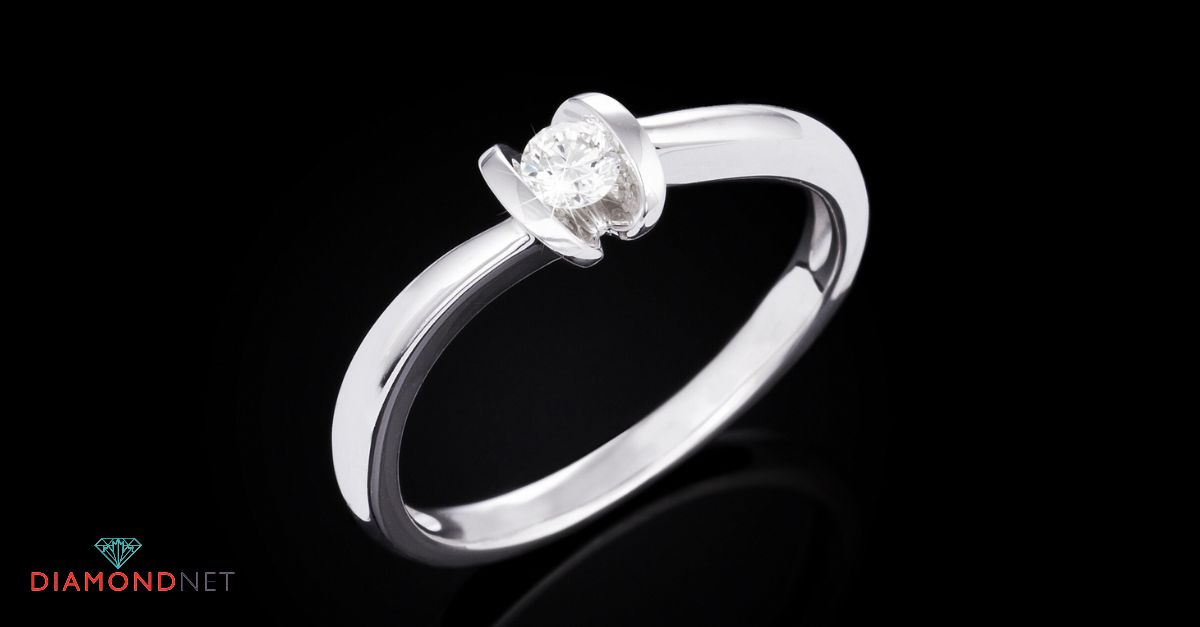
Gem Alternatives
While diamonds remain the most common centrepiece, tension settings also work beautifully with other hard gemstones such as sapphires, rubies, or Moissanite. These stones offer vibrant colour options while meeting the Mohs hardness requirement of 9 or above.
Tension-Style Hybrids
Some designs mimic the tension look while incorporating a discreet bezel or hidden prongs beneath the stone. These tension-inspired hybrids give you the visual illusion of a floating gemstone, with added stability for those who prioritize peace of mind.
Comparing Tension with Other Settings
Tension settings offer a bold and unconventional look, but how do they stack up against more traditional ring settings? Here’s a breakdown comparing tension settings to prong and bezel styles in key areas that matter for daily wear and design preference.
| Feature | Tension Setting | Prong Setting | Bezel Setting |
| Security | High, But Sensitive to Impact | Moderate; Prongs Can Loosen or Bend | Very Secure; Stone Fully Encased |
| Light Exposure | Maximum—Minimal Metal Around Stone | Good; Varies with Number of Prongs | Lower—Metal Surrounds the Stone Edges |
| Maintenance | Easy to Clean; Harder to Resize | Requires Prong Tightening Over Time | Low Maintenance; Less Likely to Snag |
| Aesthetic Style | Modern, Sculptural, Minimalist | Classic and Widely Versatile | Sleek, Protective, Modern or Vintage |
| Customization | Band Style Can Vary; Solitaire Only | Highly Customizable (Halo, Pavé, etc.) | Many Variants; Suits All Stone Shapes |
Tension settings appeal to buyers looking for contemporary architecture and dramatic sparkle. While prong and bezel settings offer more versatility and traditional appeal, the tension design stands out for its floating effect and clean silhouette.
For a detailed overview of engagement ring styles and features, visit our engagement ring guide for expert advice and inspiration.

Future Outlook: What’s Next for Tension Settings
Tension settings continue to evolve through innovation, education, and consumer interest. Here’s what to expect in the coming years:
Advances in Metals and Materials
High-performance alloys and reinforced titanium are making tension settings even more durable. These materials improve resistance to everyday wear, allowing for thinner yet stronger bands that maintain pressure without compromising integrity.
Precision Engineering Through Technology
Modern CAD tools and laser-assisted gemstone cutting now allow for exact tolerances. This ensures that the stone fits perfectly within the ring’s structure, reducing the risk of movement or stress fractures and improving long-term security.
Design Hybrids
Jewellers are blending tension-style aesthetics with added structural support. Look for emerging hybrids that combine hidden bezels, under-gallery prongs, or partial channels with the signature floating look—providing greater versatility and peace of mind without sacrificing visual appeal.
Greater Consumer Awareness
With more educational resources and trained jewellers, confidence in tension settings is growing. As understanding deepens, more buyers feel empowered to choose this bold style, especially for custom engagement rings.
Broader Customization
The popularity of tension settings is fuelling interest in customization. Expect more demand for personalized tension rings that incorporate unique diamond shapes, coloured gemstones, mixed metals, or sculptural bands.
Conclusion
A tension setting engagement ring is more than just a striking design — it’s an intersection of modern aesthetics and technical mastery. With the diamond suspended in a seemingly weightless hold, this setting offers an architectural, minimal-metal profile that showcases brilliance from every angle.
While its sleek look is ideal for those who appreciate bold design and clean lines, tension settings also require informed decisions. Exact sizing, suitable gemstones, and the right metal are essential to ensure both safety and longevity. They’re not for everyone, but for the right wearer, they’re unforgettable.
At DiamondNet, we specialize in helping clients navigate unique ring styles with confidence. If you’re curious about tension settings — or want to explore whether it suits your lifestyle — book a custom consultation or visit our Vancouver showroom. We’ll walk you through every detail to help you design a ring that’s truly yours.
